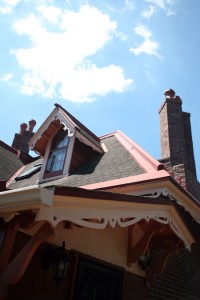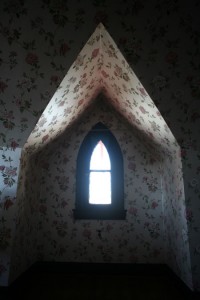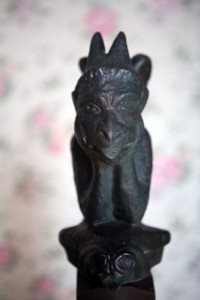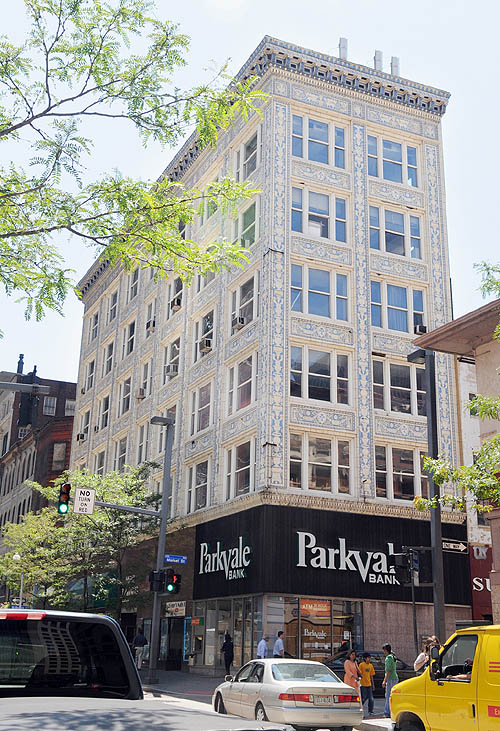
Category Archive: News Wire Services
-
Landmarks expand reach with $5 million loan from PNC
By Ron DaParma
TRIBUNE-REVIEW
Thursday, July 24, 2008A $5 million loan will help Landmarks Community Capital Corp. spark more development in urban neighborhoods in the Pittsburgh area.The loan by PNC Bank to Landmarks Community Capital’s Urban Economic Loan Fund will be announced today in Homewood by the nonprofit investment company and PNC.“This first investment in the Urban Economic Loan Fund will be the catalyst for more development in urban markets throughout Pittsburgh,” said Howard B. Slaughter Jr., CEO of Landmarks Community Capital.
“We are appreciative of PNC’s willingness to invest in the fund and have already made commitments to utilize this funding.”
Landmarks Community Capital is considering Homewood for one of its next investments, Slaughter said. PNC is the only banking company with a branch there, he said.”Homewood is a key urban market, and we wanted to come to the neighborhood to spark more interest in development there,” he said.
Prior to the PNC investment, the corporation has been using funds from its Preservation Loan Fund, Saughter said. The corporation is an offshoot of The Pittsburgh History & Landmarks Foundation.
Those investments have included a $462,000 low-interest loan to Friendship Development Associates to build three loft-style residential units in the Bloomfield-Garfield area, and $160,000 loan to help the Hosanna House social service organization restructure financing and initiate additional development in Wilkinsburg.
The corporation also loaned $885,000 to the East Liberty Development Inc. to help build 35 condominiums at the historic former YMCA building in East Liberty and four condos in Queen Anne-style homes being rehabilitated on Rippey Street.
“Our commitment makes it possible for Landmarks Community Capital Corp. to offer below-market interest rates on loans, which will stimulate initiatives in affordable housing and community development,” said Linda F. Morris, senior vice president and Western Pennsylvania market manager for PNC.
Ron DaParma can be reached atrdaparma@tribweb.com or 412-320-7907.
-
Cost of new Mt. Lebanon high school: $132 million
By Tim Puko
TRIBUNE-REVIEW
Wednesday, July 23, 2008It would cost the Mt. Lebanon School District close to $132 million in construction costs alone to build a high school, project architects said Tuesday night.A new building is one of four options the district can consider for the high school, the architects told about 300 residents who attended a special meeting to hear the possibilities.The district needs at least $79.8 million to pay the cost of renovations to the building, including a new roof, asbestos abatement and facilities improvements, said Kerry Leonard of the OWP/P design firm in Chicago.
The architects spent most of their time talking about the midpriced option, an estimated $118.7 million combination of renovation and new construction.
That option and the new high school option are anchored around a glass-enclosed, multifloor commons area, which could include an open library and other social and collaborative workspaces.A fourth option would include improvements to educational space on the high school’s 80-year-old campus off Route 19.The main building of the high school along Cochran Road is to be preserved in all the project options, something community residents demanded, architects said.
The project was an issue in last year’s school board elections, where rumors about the cost were used against incumbent candidates.
Yesterday was the first time the expected cost of the options was made public.
“The modifications to this building will be expensive and difficult to afford,” board member Elaine L. Cappucci acknowledged. “But what we cannot afford is to do nothing.”
Architects and district officials talked about the plans for more than 90 minutes in the high school auditorium.
“What I’m seeing here is something that’s completely modern and something that’s completely new, but doesn’t pay attention to the design aesthetics of the (older) community it’s in,” said resident and parent Jim Martin. “I’m worried it’s going to stick out like a sore thumb.”
District officials have tried to brace the community for the project’s impact. They have had regular updates from the architects at board meetings, created a blog dedicated to the project on the district’s Web site and frequently promoted yesterday’s meeting.
More than half of the district’s utilities costs stem from the high school, and there are limitations for one building on the campus because of asbestos, Cappucci said.
The district needs to decrease capacity to match decreasing enrollment, she said.
The renovation and new building options would make the high school about 20 percent smaller than the current school.
Enrollment last year was 1,912; new construction and major renovations are targeting an 1,800-student capacity.
Architects and district officials want classroom clusters and space for collaborative educational programs to be a centerpiece of the redesign, a common goal in contemporary school building projects.
Funding for the project will have to be made through bonds, Superintendent John R. Allison said.
District officials plan to choose their design by mid-September.
Tim Puko can be reached at tpuko@tribweb.com or 412-320-7991.
-
Heathside Cottage’s mystery adds to its appeal
By Bob Karlovits
TRIBUNE-REVIEW
Saturday, July 19, 2008 It sits atop Fineview, peering over Downtown like one of the gargoyles that lurk through the house.
It sits atop Fineview, peering over Downtown like one of the gargoyles that lurk through the house.
Jack Miller from the Pittsburgh History & Landmarks Foundation knows some of the history of the home — known as Heathside Cottage — that could have been on its perch before the Civil War. It is dated 1855 on a plaque near its bay window, but continuing research debates that."The story is in the bricks," Miller says with a sigh.
 Charm from the 19th century is an obvious feature of the home the foundation has up for sale. The two-bedroom home with solidly repointed brick, plastered walls and decorative wood inside and out is being marketed at $189,900.
Charm from the 19th century is an obvious feature of the home the foundation has up for sale. The two-bedroom home with solidly repointed brick, plastered walls and decorative wood inside and out is being marketed at $189,900.The home, which had a guest spot in Rick Sebak’s 1977 "North Side Story," also has a one-car garage, a stylistically matching shed, a bricked patio and a garden area that once was a dilapidated home next door.
"I love it," says filmmaker Sebak about the home. "It is the kind of house that just makes you want to visit and spend some time there."The home is small with high ceilings in its two main levels, but low ones in the basement where former owner Judith Harvey hung signs saying: "The ceiling is low, the archways lower, anyone over 5 feet, DUCK."
Upstairs, the 10- and 11-foot ceilings give space to rooms that otherwise are tight and small. It is not a home for big parties, big people or big families.
The first floor consists of a kitchen-dining room, parlor and den. Upstairs are two bedrooms and a bath, with a skylight over the staircase adding another touch of airiness to the home.
The outside is dominated by ornate, wooden trim that Miller jokes earned the home the name of the "witch’s house" from neighborhood kids.
Harvey, who is retired, serves as librarian of the Frank B. Fairbanks Rail-Related Archive for the foundation. She moved out of the home at the end of June.
 Harvey bought the home in 1992 as a project to restore. After her husband died in 1996, she moved in permanently and continued her work, adding ornamental gargoyles as she went. In 2000, she entered into an arrangement with the foundation known as a retained life estate.
Harvey bought the home in 1992 as a project to restore. After her husband died in 1996, she moved in permanently and continued her work, adding ornamental gargoyles as she went. In 2000, she entered into an arrangement with the foundation known as a retained life estate.Under that arrangement, Miller says, the title of the home was transferred to the foundation, but she retained the right to live there. She remained responsible for taxes and maintenance, but received a charitable income-tax deduction.
She also received a similar deduction this year for the unused part of her donation to the foundation. History & Landmarks officials then received control of the property to manage or market whatever way they wished,
Harvey does not want to discuss matters, but Miller says he believes she simply grew tired the work that comes along with taking care of a property.
Al Tannler, director of historical collections for the History & Landmarks, says no data exists on the construction of the home. But it may be related to a cluster of like homes called Evergreen Hamlet in Ross.
Col. James Andrews, a self-taught stone mason and engineer, bought the Fineview property in 1862, so Tannler believes he "had the home built and may have named it" Heathside, which shows up on a stone above the bay window.
He did work for Joseph Kerr (1816-1888), an architect who designed the Gothic Revival Evergreen Hamlet homes. Therefore, Tannler suggests, Kerr is a likely suspect for the design of Heathside.
That whole story, though, puts it behind the 1855 date, but that doesn’t matter too much, he says.
 "It’s significance is its rare quality," he says, "and the fact that it is one of a few of its kind."
"It’s significance is its rare quality," he says, "and the fact that it is one of a few of its kind."Bob Karlovits can be reached at bkarlovits@tribweb.com or 412-320-7852.
-
Council delays vote on status of historic North Side shelter
By The Tribune-Review
Thursday, July 17, 2008Pittsburgh City Council delayed a vote Wednesday on whether to give historic protection to a North Side building that serves as a Salvation Army homeless shelter and chapel.
The Salvation Army wants to demolish the 81-year-old building, which once served as the headquarters of the Ancient and Illustrious Order of the Knights of Malta, a social and community service club.The Mexican War Streets Society and North Side historic preservationists want to save the building because they believe its removal would ruin the historic character of the neighborhood. Council could consider the matter in two weeks.
-
Councilman protests forced preservation of Malta Temple
By Jeremy Boren
TRIBUNE-REVIEW
Tuesday, July 15, 2008Forcing the Salvation Army to preserve an 81-year-old North Side religious and social services center would violate a city rule that says a church’s owner — not interlopers — must willingly seek historic protection, a Pittsburgh councilman said Monday.”Churches have an inherent right to have control over their own property,” said the Rev. Ricky Burgess, a councilman and pastor of Nazarene Baptist Church in Homewood. “They have autonomy in terms of seeking historic designation.”To back up his claim, Burgess cited a 2003 amendment to the city’s historic preservation law sponsored by then-Councilman Bob O’Connor.
The amendment states: “Nomination of a religious structure shall only be made by the owner(s) of record of the religious structure.”
A religious structure is defined as a “place of religious worship.”O’Connor fought for the amendment under the belief that some churches can’t afford to make repairs or facade improvements to comply with historic preservation standards.
Burgess said Sunday church services have been held regularly for nearly 35 years in the Salvation Army-owned property commonly known as the Malta Temple building because it is the former headquarters of the Ancient and Illustrious Order of the Knights of Malta.
The nonprofit Mexican War Street Society, a historic preservation group, nominated the Malta Temple for historic protection in January to prevent the Salvation Army from demolishing it.
The city Planning Commission and Historic Review Commission approved the nomination. It faces a preliminary vote Wednesday before City Council.
David McMunn, president of the society, said the Malta Temple is zoned as a commercial structure, not as a church. Allegheny County assessment records confirm that.
McMunn said tearing down the stately brick building at 100 W. North Ave. and replacing it with a modern building nearby would remove an important thread from the North Side’s already frayed historic fabric.
McMunn and other historic preservationists want the building to be renovated.
“The Salvation Army has first and foremost been a place of worship,” said Maj. Jim LaBossiere, Allegheny County coordinator for the organization.
LaBossiere agreed with Burgess’ argument.
He said religious services are held at 9:30 and 11:30 every Sunday morning in the Malta Temple building. The center doubles as a daytime homeless shelter where the indigent can receive lunch, counseling and use shower and laundry facilities.
Salvation Army officials have said previously that renovations would be too costly and that the building isn’t large enough to accommodate plans for additional worship, classroom, gymnasium and computer lab space.
“They don’t seem to see the need to partner with the neighborhood,” McMunn said. “Well, they need to because, as residents, we’re here forever.”
Jeremy Boren can be reached at jboren@tribweb.comor 412-765-2312.
-
Urban Redevelopment Authority completes Millcraft deal
By staff and wire reports
Pittsburgh Tribune Review
Tuesday, July 8, 2008The Pittsburgh Urban Redevelopment Authority completed the $2.31 million sale of five Downtown buildings, including the former G.C. Murphy store, to Washington County developer Millcraft Industries Inc.The deal was completed June 30 and deeds recorded July 3 in Allegheny County. The authority board approved the sale at its June 12 meeting. The properties will comprise Millcraft’s Market Square Place project, a mixed-use development that will include the future home of the Greater Pittsburgh YMCA.The Bedell Building, the Headgear Building, the Candyrama Building and the D&K Building, at the Fifth and Forbes corridor, are included in the sale.
-
Buhl Building ready for its closeup
Friday, July 04, 2008 -
Market Square street closure may alter apartment project
By Jeremy Boren
TRIBUNE-REVIEW
Thursday, July 3, 2008The Pittsburgh History & Landmarks Foundation, a major investor in Market Square’s revitalization, might nix a new seven-unit apartment complex if the Pittsburgh Downtown Partnership sticks to a plan to close some of the square to vehicles.The foundation is spending $3.5 million to renovate three vacant buildings on Graeme Street into Market at Fifth, a plan for seven upper-floor apartments, a ground-floor restaurant and a rooftop garden.
The partnership’s plan would close Graeme, the apartments’ entrance, and nearby McMasters Way as part of a $4.8 million to $5 million Market Square overhaul that, so far, has gone smoothly.
“We do not see how people are going to want to rent apartments on a dead-end street. People do not frequent dead-end streets,” said attorney Anne E. Nelson, who voiced the concerns at a meeting of the city Historic Review Commission.
“If Graeme Street is closed, Landmarks does not know whether it should complete construction of the project,” Nelson said.Arthur P. Ziegler, the foundation’s president, said there’s time to develop the apartments as something else if a compromise can’t be reached and the street is closed.The commission approved Pittsburgh Downtown Partnership’s preliminary plans for Market Square, but members urged the partnership, a nonprofit that represents Downtown business owners, to find a solution with the foundation.
“We’re going to do what’s best for the square,” said Dina Klavon, the designer the Pittsburgh Downtown Partnership hired to guide Market Square’s overhaul.
Klavon said she’s open to changes and plans to meet with Pittsburgh History & Landmarks officials.
“We’re trying to give Market Square back to the pedestrian,” said Mike Edwards, president of the Pittsburgh Downtown Partnership. “Right now it’s a thoroughfare. We want it to be a destination.”
Edwards said renovation of Market Square could start in spring.
The most striking feature about Klavon’s design is that it would make Market Square resemble a one-level European piazza.
The roadway would be flush with sidewalks and outdoor cafes, which would be differentiated by using various types of pavement and cobblestone.
Traffic and parking would be permitted on the perimeter of the square. No traffic would be allowed in the middle, where Market Street and Forbes Avenue meet.
Jeremy Boren can be reached at jboren@tribweb.comor 412-765-2312.


